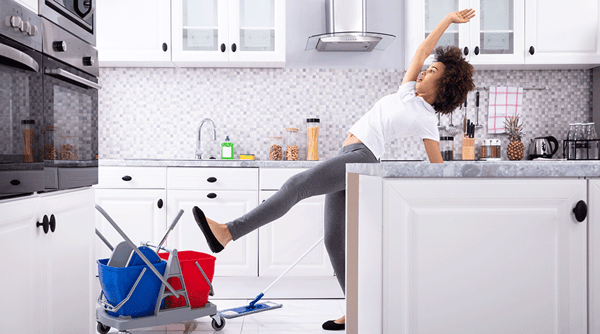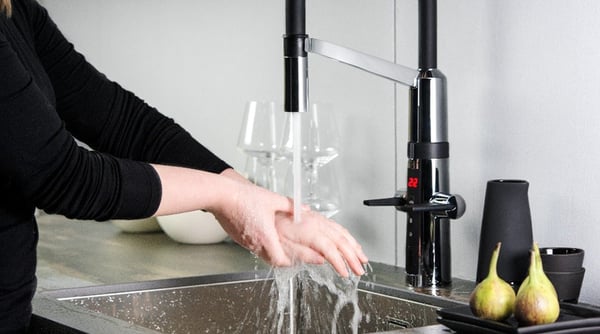Is the water coming out of your kitchen faucet too hot? Do you risk slipping on wet surfaces while you cook? Kitchens are not always as safe as they seem. And to help you understand what to look out for, here are 5 easy upgrades that will make your kitchen a safer space.

You might be surprised by the number of accidents that occur in kitchens across the world. A third of home fires start in our kitchens and around 350,000 people are injured by sharp knives each year. Burns, fires and lacerations cause the majority of injuries while we are busy doing even the simplest things – be it cooking dinner or filling up a water bottle.
For many this might come as no surprise. Our kitchens are, after all, equipped with some of the most hazardous items and appliances in our homes: sharp knives, hotly exposed surfaces, boiling pots of waters and so on.
One of the most important steps to take to improve safety in your kitchen, for example, is ensure there is adequate lighting. If you aren’t able to see what you’re doing, things can go wrong. And making sure your fire extinguisher (yes, it’s a must-have) is well within reach. Don’t leave cooking food unattended and immediately dry up spills to avoid slipping on wet floor.
There’s much to look out for, we know. So, let us share with you a few steps for a safer kitchen. Some you might be familiar with already; others will serve as inspiration.
 Hybrid faucets enhance safety in the kitchen thanks to temperature control and touchless functions)
Hybrid faucets enhance safety in the kitchen thanks to temperature control and touchless functions)
- Anti-slip flooring – falls are among the most prevalent causes of accidental death and trauma-related injuries. And in our kitchens, where we continuously handle fluids and greasy substances, we should be paying extra attention. That’s why anti-slip flooring is a must, which can include laminate and wood with a flat finish, among others. Also make sure to add carpet pads under your rugs.
- Pick the right faucet – another cause of injury is exposure to piping hot water. Installing a kitchen faucet equipped with touchless faucets that allow for pre-adjusted water temperature might be something worth considering to prevent scalding. Alternatively, manual faucets equipped with hot water lock or temperature display are also a safer choice. It’s your call!
- Choose healthy materials – remember that a healthy kitchen includes healthy materials. Our utensils can have an impact on our nutrition. So, for example, choose wood or stainless steel over plastic which contains toxic substances. Store food in glass containers and opt for bamboo cutting boards.
- Clean drinking water – why waste plastic unnecessarily by buying bottled water, when you can drink it straight out of the tap? Where it is safe to do so, tap water is a healthy and sustainable choice. However, we do recommend using high-quality filter or installing a high-quality kitchen faucet that, thanks to nickel-free coated waterways, prevents water from being contaminated by harmful substances.
- Prevent dishwasher leaks – to reduce the risk of dishwasher related damage, we suggest installing a smart valve to your dishwasher to avoid leaks or malfunctions. Our smart dishwasher valve can be controlled remotely and automatically turns the water off after 4 or 12 hours.
As accidents happen in our kitchens more frequently than we might think, do ensure the space is safe to cook and drink in. Whether you are concerned about slips or boiling water, there are simple ways to prevent incidents from happening.
